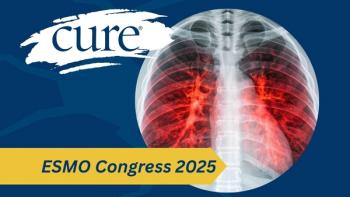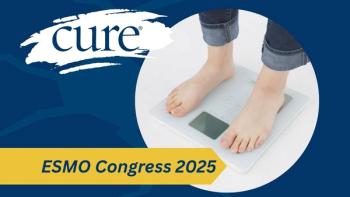
Tumor Testing, ctDNA Finds More Patients Eligible for Personalized Drugs
Concurrent circulating tumor DNA and tissue-based testing identified more patients eligible for personalized cancer care than either of the tests done alone.
There are two popular testing strategies for patients with cancer: circulating tumor DNA (ctDNA) and tissue-based sampling. While most patients do not undergo both at the same time, recent research showed that running the tests concurrently — meaning at the same time — led to the identification of more patients with targetable mutations that made them eligible for personalized treatment.
READ MORE:
CURE® recently spoke with study author, Justin Guinney, SVP of Cancer Genomics at Tempus Therapeutics, about the findings, which were published in JAMA Network Open.
Can you give an overview of your study and why it was important to conduct?
Performing next-generation sequencing on samples of a patient's tumor, along with their blood, allows us to identify actionable genes that can help your doctor make better treatment decisions for your care.
For this study, we are assessing whether the use of testing both the tissue from the tumor and the blood at the same time could increase our odds of detecting a molecular genomic variant that is tied to a targeted treatment, versus just sequencing either just the blood or the tumor.
Can you explain the difference between tissue-based and ctDNA-based genomic profiling? Is one currently used more frequently than the other?
There are pros and cons to each test. Today, tissue-based testing is more widely used for genomic profiling given its increased sensitivity and low false positive rates. This is because there is a much higher concentration of tumor DNA obtained from solid tissue, while circulating tumor DNA (ctDNA) is highly diluted in the bloodstream. In the case of metastatic disease with multiple lesions, solid tissue testing may miss genomic variants residing in certain metastatic sites harboring unique variants reflective of tumor heterogeneity. ctDNA is more likely to detect these unique variants as it is sampling from all tumor DNA present in circulating blood. There are also logistical differences. Tissue-based testing is a more invasive procedure, whereas ctDNA can be obtained by simple blood draws.
Were there any aspects of your findings that surprised you?
Many of the hypotheses we had going into this study were confirmed. Chief among these was that the concordance among the two assays increased with increasing ctDNA burden, that is, as the amount of circulating tumor DNA increases, ctDNA is able to detect more of the variants that is also found by tissue.
Similarly, as ctDNA increases, it is able to detect more actionable variants not found in solid tissue testing, most likely due to inter-tumor heterogeneity, which refers to multiple distinct tumors harboring unique variants. Concurrent testing detected distinct actionable variants by each test alone that could be targeted by specific therapy; having both test results at the same time increased the yield of detection of actionable genomic targets offering more therapy options for patients
Do your findings suggest that patients should undergo both tissue-based and ctDNA testing? Is this something patients should bring up with their health care teams?
In all cases, patients should consult with their treating physician to determine the optimal testing and treatment strategy. Our findings reinforce existing [National Comprehensive Cancer Network] guidelines for [non-small cell lung cancer] which recommend ctDNA testing in addition to tissue, especially when solid tissue may be difficult to obtain which can delay optimal treatment decisions.
Our findings also support the use of concurrent ctDNA in breast cancer as we were able to show increased detection of ESR1m variants using ctDNA — most likely arising as a resistance mechanism from prior aromatase inhibitors in certain patients — and can be used to guide therapy selection and change of therapy.
The most important message is that these two tests can be highly complementary and rely on a number of factors that should be discussed with their physician.
What are the next steps/unanswered questions in this line of research that you’d like to see addressed in the coming years?
As more data accrues in the Tempus real-world database, we will examine concurrent testing in more cancer types. Additional questions that we will pursue include assessing the impact of concurrent testing on patient outcomes and performing a health economics analysis.
For more news on cancer updates, research and education, don’t forget to





